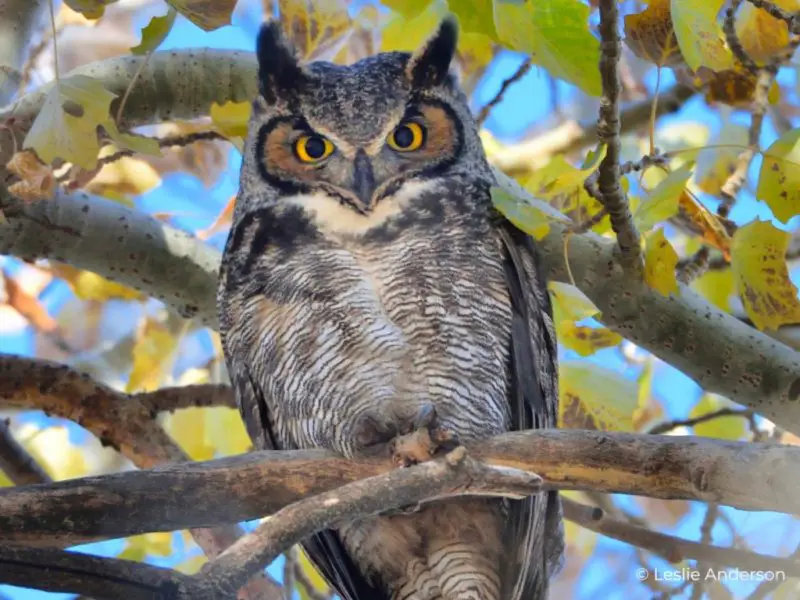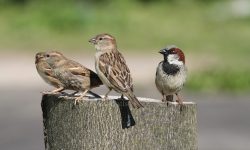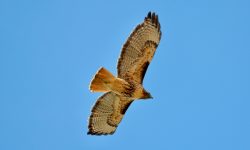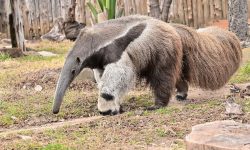Owls are mysterious masters of the night sky, known for their silent flight, piercing eyes, and eerie hoots. As apex nocturnal predators, they are often seen as symbols of wisdom, stealth, and the unknown. But behind their haunting presence lies a fascinating and complex life cycle—from a blind, helpless hatchling hidden in a tree hollow to a fully developed predator navigating darkness with precision. This article explores the owl’s remarkable journey through life, examining the key stages that transform a downy chick into a silent hunter of the night.

Courtship and Mating Behavior
Territorial Calls and Pair Formation
The owl’s life cycle is set in motion not by movement, but by sound. As breeding season begins—often triggered by longer nights and increased food availability—male owls announce their presence with haunting vocalizations that resonate across forests, marshes, and open grasslands. Each species has its own unique vocal signature: the deep, resonant hoots of the Great Horned Owl contrast sharply with the piercing screeches of the Barn Owl, or the rhythmic “who-cooks-for-you” calls of the Barred Owl. These sounds serve a dual purpose: they function both as territorial declarations and as mating advertisements.
Positioned on high branches, fence posts, or cliff ledges, the male repeatedly calls from prominent perches within his chosen territory, signaling to rival males to keep their distance and to nearby females that the area is suitable for nesting and food supply. These calls are not just warnings—they are intricate, energy-intensive signals that communicate the male’s health, vitality, and readiness to breed.
When a receptive female responds, a subtle dance of acoustic courtship begins. Males and females often exchange calls in duets, gradually closing the distance between them. Once they make visual contact, courtship becomes more tactile and behavioral. In many species, including the Barn Owl, Tawny Owl, and Long-eared Owl, bonding rituals include mutual preening (allopreening), where the pair grooms each other’s feathers, reinforcing trust and familiarity. This is often followed by food offerings, where the male presents prey to the female—a gesture that demonstrates his hunting skill and ability to provide during nesting.
In species such as the Great Horned Owl, pairs may engage in spectacular vocal synchrony, echoing their calls at dusk in a near-perfect duet. This acoustic coordination not only strengthens pair bonds but also serves to audibly stake their joint claim over a territory.
Most owl species are seasonally monogamous, remaining paired for the duration of a breeding cycle. However, several species—especially in stable habitats—form long-term pair bonds, returning to the same nesting site and partner year after year. These enduring partnerships, rooted in sound and strengthened by behavior, form the foundation of the owl’s reproductive success and the beginning of a new life cycle in the quiet corners of the night.
Nesting Site Selection
Owls defy traditional nesting norms. Unlike songbirds or raptors that weave complex structures from twigs, grasses, or mud, most owls are opportunistic nesters, relying on existing natural or artificial shelters rather than constructing nests from scratch. This minimalist strategy reduces energy expenditure but demands keen selection—location, in the case of owls, is everything.
Across diverse habitats—from boreal forests to desert canyons—owls choose nesting sites that offer concealment, stability, and proximity to food sources. For many species, tree cavities serve as ideal nurseries. These hollows, often created by decay, woodpecker activity, or lightning damage, provide darkness and thermal insulation critical for egg incubation and chick development.
Larger species, like the Great Horned Owl, may opt for abandoned nests of other large birds, including hawks, crows, or herons. Although these inherited platforms are often flimsy and exposed, their elevated position offers panoramic views and relative protection from ground predators. In rocky environments, species like the Eurasian Eagle-Owl nest on cliff ledges or rocky alcoves, where camouflage and vertical inaccessibility safeguard their brood.
Adaptable species, such as the Barn Owl, have embraced human-altered landscapes. They frequently nest in barn rafters, church towers, grain silos, and even highway overpasses—structures that mimic natural cavities and offer dry, elevated spaces shielded from disturbance. Conservation programs often support these owls by installing artificial nest boxes, which have proven highly successful in boosting breeding populations.
Regardless of location, a suitable nesting site must meet key criteria: it must be protected from predators and harsh weather, spacious enough to accommodate growing chicks, and within reach of abundant prey, such as rodents, birds, or insects. Once such a site is found, the female claims it and begins preparing for the next phase—egg laying—marking the official start of the next generation in the owl’s silent legacy.
Egg Laying and Incubation
Clutch Size and Laying Interval
Once settled into her chosen nesting site, the female owl begins laying her clutch—an event governed by both species-specific biology and environmental cues such as food availability, day length, and climate. The number of eggs varies across species, but most lay between 2 and 7 eggs, with smaller owls like the Eastern Screech-Owl typically producing larger clutches than larger raptors like the Snowy Owl, whose clutch size can dramatically fluctuate based on prey abundance.
Rather than depositing all eggs at once, the female lays them sequentially over several days, typically one egg every 1 to 3 days. This asynchronous laying pattern results in a hatch order hierarchy—the first chick to hatch often has a developmental advantage over its younger siblings. In lean years, this system increases the survival chances of at least one offspring, while in resource-rich seasons, multiple chicks may thrive.
Each egg is pure white and rounded, lacking the speckles and colorations common in songbirds. This absence of camouflage is unproblematic, as owl nests are usually hidden in dark, enclosed spaces where eggs are safe from sunlight and sight-based predators. The eggs’ thick shells are adapted to protect the developing embryos during prolonged periods of brooding and are well-insulated by the mother’s warm, featherless brood patch.
By staggering the arrival of each chick, owls implement a natural survival strategy—one that reflects the delicate balance between reproductive output and parental capacity. This system ensures that at least the strongest hatchling has the best chance of survival, a critical adaptation in unpredictable environments where prey availability can rapidly change from one week to the next.
Incubation Period
Incubation in owls begins immediately after the first egg is laid, marking the start of an intensive period of parental investment. This early onset of incubation, coupled with staggered egg-laying, leads to asynchronous hatching—a reproductive strategy with profound implications for chick survival and sibling dynamics.
The incubation period typically lasts between 25 and 35 days, varying by species and climate. Smaller owls such as the Boreal Owl may have slightly shorter periods, while larger species like the Eurasian Eagle-Owl may require the full span. During this time, the female assumes almost exclusive responsibility for brooding, using her body to maintain a stable microclimate around the eggs. Her brood patch—a featherless area rich in blood vessels—allows for direct heat transfer, ensuring that embryonic development proceeds at the necessary temperature, typically between 36–38°C (96.8–100.4°F).
The eggs also require consistent humidity, which is often regulated passively by the enclosed nesting environment. In tree hollows or burrows, natural moisture retention helps maintain the right balance, whereas in open nests, fluctuations can pose a risk to embryo viability. The female carefully shifts and turns the eggs at regular intervals to promote even heat distribution and prevent the embryo from adhering to the shell.
Meanwhile, the male plays a crucial supporting role, tirelessly hunting and delivering prey to the nest. His ability to provide enough food influences not only the female’s health but also the future success of the hatchlings. In times of prey scarcity, females may reduce activity to conserve energy, occasionally leaving the nest for brief intervals to assist in hunting.
The first egg to hatch produces the eldest chick, which enjoys a developmental head start—growing faster, feeding earlier, and typically becoming dominant over its siblings. This age hierarchy is especially important in years of low food supply, when only the strongest may survive. In optimal conditions, however, it enables a staggered feeding rhythm that helps parents manage the demanding task of raising multiple young at different stages of growth.
Hatching and Early Development
Fragile Beginnings
The moment of hatching marks a dramatic shift in the owl’s developmental journey. Emerging from their eggs with great effort, newly hatched owlets are altricial—a term used to describe birds that hatch in an extremely undeveloped state. They are blind, featherless, and virtually immobile, entirely incapable of regulating their own body temperature or defending themselves.
Their only covering is a thin layer of soft, white natal down, which provides minimal insulation and offers no protection from the cold. These delicate creatures depend wholly on their mother for warmth, as she shelters them beneath her body for hours at a time, creating a thermally stable environment critical for early growth. The brood patch on her underside remains in close contact with the chicks, acting as a living incubator during their most vulnerable stage.
In these earliest days, the male assumes the full responsibility of food provision, venturing out frequently to hunt in the surrounding territory. His prey deliveries are vital—not just for the nourishment of the owlets, but also for the sustenance of the brooding female. The diet varies by habitat and species but often includes small mammals like voles and mice, nocturnal insects, amphibians, and small birds. Food is delivered whole and later torn into manageable pieces by the mother, who gently places morsels into the open, begging mouths of her blind offspring.
Because hatching is staggered, the oldest chick usually feeds first and more frequently, gaining a competitive edge in both size and strength. This age gap often shapes the dynamic within the nest, where the younger owlets remain dependent longer and must wait their turn—if resources are scarce, they may not survive.
Despite their fragile state, owlets grow rapidly. With steady feeding and warmth, their systems begin to mature: hearing sharpens, skeletal structures harden, and energy stores build. Within just a week, they begin to show signs of increased activity—tiny movements, vocalizations, and growing awareness of their surroundings. These fragile beginnings lay the groundwork for the powerful predator they are destined to become.
Sibling Competition and Growth
In the early life of owlets, sibling dynamics are defined not by cooperation, but by competition—a direct consequence of asynchronous hatching. Because eggs are laid and incubated at intervals, the first chick to hatch often has a critical developmental head start, sometimes days ahead of its nestmates. This age gap gives the eldest owlet a decisive advantage in strength, coordination, and feeding priority.
During feeding bouts, the dominant chick often positions itself closer to the mother, vocalizing more assertively and physically overpowering younger siblings to secure the largest portions of prey. In resource-rich environments, this competition may remain non-lethal, with all chicks growing successfully under attentive parental care. But when food is scarce, the nest dynamic can shift toward siblicide—a harsh but natural strategy in which the strongest chick monopolizes food resources, often at the fatal expense of its siblings.
While this behavior may appear brutal, it is an evolutionary adaptation to unpredictable environments, increasing the survival odds of at least one offspring in years of prey scarcity. Species such as the Great Horned Owl and Eurasian Eagle-Owl are particularly known for this phenomenon, where only the fittest survive to fledging in difficult seasons.
Despite these high-stakes beginnings, owlets undergo extraordinary development in the first two to three weeks. Their eyes open—typically around day 7 to 10—ushering in an entirely new level of sensory awareness. Their beaks sharpen, and talons begin to harden, preparing them for the predatory life ahead. At the same time, their fragile natal down is replaced with a denser second coat, offering improved insulation and feather structure.
They begin to respond more actively to environmental stimuli—turning their heads toward sounds, stretching their wings, and moving about the nest cavity with increasing coordination. These early movements are more than simple curiosity; they are the foundation for future behaviors such as wing-flapping, prey handling, and fledging. Even amid sibling rivalry, this phase represents a period of intense growth, shaping the physical and behavioral traits that will define their survival in the wild.
Fledging: Learning to Fly
Taking the Leap
Between 4 and 8 weeks of age, depending on species and environmental conditions, owlets enter a pivotal phase in their life cycle: fledging. This stage marks their first steps—often quite literally—toward independence, as they begin to explore the area just beyond the safety of the nest. The process does not unfold with a single dramatic flight, but rather through gradual and clumsy experimentation with gravity, balance, and wing control.
Initially, fledglings engage in wing-flapping exercises inside the nest cavity or on its edge, strengthening the pectoral muscles essential for flight. As confidence grows, they start hopping between branches in a behavior known as “branching.” These short, erratic movements help refine balance and coordination, offering low-risk opportunities to test their developing motor skills.
Their first true flights are often awkward and unsteady. Some owlets may simply glide to the ground or crash-land into nearby foliage. Flight muscles are still immature, and flight feathers continue to grow in length and strength. But each attempt brings improvement, building toward the sustained, silent flight that defines adult owls.
Despite their newfound mobility, fledglings remain dependent on their parents for food and protection. For several more weeks, adult owls continue to hunt and deliver prey to the young, either at the nest site or nearby roosts. During this transitional period, fledglings also begin to observe and imitate their parents’ behavior—learning to scan for movement, identify prey, and navigate their habitat silently and efficiently.
This learning phase is crucial. Poor timing, weak flight technique, or failure to recognize threats can be fatal. But for those that adapt quickly, fledging is the beginning of a powerful transformation—from a dependent, fluffy chick to a stealthy and capable predator. The leap from the nest is not just a step toward flight—it’s the threshold between dependence and self-reliance in the owl’s nocturnal journey.
Flight Mastery and Hunting Lessons
Following fledging, young owls enter a critical post-fledging dependency phase, during which their survival hinges on learning the essential skills of flight and predation. Though they now possess functional wings and basic flight capability, true mastery requires weeks of guided experience and relentless trial and error.
At this stage, fledglings begin to shadow their parents, closely observing their movements, flight patterns, and hunting techniques. The adults, though still provisioning food, gradually reduce feeding frequency, subtly encouraging the young to begin foraging for themselves. This passive teaching strategy pushes the juveniles to practice the very skills they must soon rely on independently.
Young owls first attempt short-distance glides and hovering maneuvers, followed by low pounces on stationary targets such as insects or moving leaves. As their precision improves, they begin to chase small mammals and birds, emulating their parents’ stealthy ambush tactics. These developing hunters must learn to judge distance, adjust flight angles midair, and time their strikes with pinpoint accuracy.
Integral to this training is the refinement of their unique adaptations for silent flight. The fringed edges of their wing feathers, combined with a velvety upper surface, suppress turbulence and reduce sound, allowing them to approach prey undetected. Simultaneously, they must hone their highly directional hearing, aided by asymmetrically placed ear openings and flattened facial discs that funnel sound toward the inner ear with extraordinary precision.
This dual mastery—aerodynamic stealth and acoustic targeting—is what distinguishes owls as supreme nocturnal predators. Each successful swoop, each near miss, and each attempt sharpens the juvenile’s reflexes, instincts, and spatial awareness.
By the end of this phase, which can last four to eight weeks, most young owls have developed the full repertoire of behaviors necessary for independent life. They now navigate their habitat with silent confidence, capable of locating and capturing live prey in near-total darkness—a rite of passage that completes their transformation into self-sufficient hunters of the night.
Juvenile Stage and Independence
Separation from Parents
At around 10 to 12 weeks of age, most juvenile owls reach a developmental threshold: they become physically independent and begin the difficult journey away from their natal territory. This phase, known as dispersal, marks the end of parental care and the beginning of a solitary life. Though they now possess the skills to fly, hunt, and navigate on their own, the transition to independence is fraught with challenges and risks.
Driven by instinct and ecological pressure, young owls gradually leave the area where they were hatched, seeking out new hunting grounds that are not already occupied by established adults. For some species, this may involve traveling tens or even hundreds of kilometers, depending on population density and habitat availability. Dispersal helps prevent inbreeding and reduces competition among kin, but it also introduces the juvenile to a world without safety nets.
During this vulnerable period, mortality rates are high. The newly independent owls face a gauntlet of threats: predators such as foxes, hawks, and even other owls; vehicular collisions as they cross roads or hunt near urban areas; starvation, if prey is scarce or hunting skills prove insufficient; and aggression from territorial adults, who may drive intruders away from prime nesting or feeding sites.
Habitat fragmentation exacerbates these dangers. In areas where forests have been cleared or natural prey populations have declined, juveniles may struggle to find suitable territory, forcing them to settle in suboptimal or risky environments. Some end up in marginal zones—agricultural fields, roadside trees, or city fringes—where survival is uncertain.
Yet for those that endure, this period serves as a vital crucible. It tests the owl’s instincts, resilience, and adaptability. Every successful hunt, evasive maneuver, or night spent perched in safety sharpens their survival toolkit. With time, the young owl will claim its own territory—a silent corner of the landscape—and begin the next chapter of its solitary and secretive life.
Physical and Behavioral Maturation
As juvenile owls transition from fledglings to fully independent hunters, they enter a transformative phase of physical and behavioral maturation. Though they may already resemble adults in size and silhouette, subtle but critical developments continue to unfold—refining their appearance, senses, and survival instincts.
One of the most visible changes occurs in their plumage. Juvenile owls typically sport a coat of fluffy down interspersed with immature feathers, which gradually gives way to more structured, species-specific adult plumage. This process, known as prebasic molt, alters both coloration and patterning. For example, a young Barn Owl transitions from a pale, speckled appearance to the smooth, golden-white sheen of maturity, while Great Horned Owls lose their streaky juvenile plumage in favor of the mottled browns and blacks that provide effective camouflage in woodland habitats.
As their feathers mature, so do their flight mechanics. Wingbeats become more efficient, landings more controlled, and their legendary silent flight—aided by specialized fringed feathers—reaches full capability. At the same time, facial disc muscles strengthen, enhancing their ability to pinpoint prey through directional hearing, a trait that is fully developed but constantly refined with use.
Behaviorally, juveniles continue to sharpen their predatory repertoire. They improve their stealth, timing, and strike accuracy, learning to adapt their hunting strategies to varying terrain, weather, and prey availability. Their night vision, already excellent at hatching, becomes even more precise as the retina matures, allowing them to detect minute movements in near-total darkness.
Vocal development also progresses. While juvenile calls often begin as high-pitched, rasping food cries, they soon deepen and diversify into the distinct hoots, screeches, or whistles characteristic of adult owls. These vocal changes are essential for future territorial defense and courtship, serving as a preview of the roles they will soon assume.
Though now self-sufficient, young owls are still students of the night. Every hunt, evasion, and encounter with a rival shapes their instincts. By the end of this phase, typically within six months to a year, they have become not just survivors, but skilled predators—poised to claim territory, find a mate, and continue the ancient rhythm of the owl’s life cycle.
Reaching Adulthood
Sexual Maturity and Territory Establishment
After months of growth, learning, and silent mastery of their environment, young owls reach the final threshold of maturity: sexual readiness. Most species attain sexual maturity between 1 and 2 years of age, though the timeline can vary slightly based on factors such as species, food availability, and environmental stability. Smaller owls, like the Eastern Screech-Owl, tend to mature earlier, while larger species such as the Snowy Owl or Great Grey Owl may require a longer developmental period.
With maturity comes the drive to establish a territory—a defining step in the owl’s transition from solitary survival to reproduction. Territory is more than just space; it is a resource-rich domain that provides access to prey, shelter, and secure nesting sites. Securing such an area is not easy. Many landscapes are already occupied by experienced adult owls, and newcomers must navigate a competitive arena filled with vocal duels, aerial posturing, and boundary patrolling.
Territorial boundaries are fiercely defended, especially during the breeding season. Male owls announce their claim through persistent vocalizations, often delivered from high perches under the cover of darkness. These calls are both a warning to rivals and an invitation to potential mates, serving as the owl’s long-distance advertisement of fitness and dominance. Physical confrontations are rare but not unheard of—particularly in densely populated or fragmented habitats where quality nesting sites are scarce.
Once a suitable territory is secured, the mature owl begins to seek a mate. In many species, this leads to ritualized courtship behaviors such as food offerings, synchronized calling, and mutual grooming. Successful pairing culminates in nest site selection, egg-laying, and the continuation of the life cycle—now from the other side, as a parent.
This moment marks a full transformation: from silent hatchling to master of the night, from dependent chick to territory holder and progenitor. The owl, now a sentinel of its own domain, prepares to shape the next generation, weaving its legacy into the nocturnal fabric of forests, fields, and skies.
Mastering the Night
By the time an owl reaches adulthood, it is no longer merely surviving in the dark—it is ruling it. Years of growth, learning, and adaptation culminate in a creature perfectly sculpted by evolution for nocturnal predation. Every aspect of the adult owl’s anatomy and behavior is tuned to a life governed by shadows and silence.
Its wings are built not just for flight but for inaudible movement. The leading edges of the flight feathers are finely serrated, breaking up turbulence, while the velvety upper surface muffles remaining sound. This structural engineering renders the owl’s flight almost completely silent, allowing it to approach prey undetected and strike with surgical precision.
Just as remarkable are the owl’s facial discs, which serve as finely tuned acoustic radar systems. These concave arrangements of feathers capture and direct sound waves toward asymmetrically placed ears, enabling the owl to triangulate the exact location of a rustling rodent beneath a layer of snow or leaves—even in total darkness.
Its eyes, fixed in their sockets and forward-facing, grant a wide binocular field of view and intense focus. Packed with rod cells, the owl’s retina is hypersensitive to light, allowing it to detect motion at levels imperceptible to most other animals. Though it cannot move its eyes, the owl compensates with a neck that can rotate up to 270 degrees, granting near-complete visual coverage of its surroundings.
In the hunt, adult owls exhibit a behavioral mastery as refined as their physical tools. They are creatures of patience, stealth, and precision—watching, waiting, then striking with explosive force. Their talons are built for gripping and killing, powered by muscles capable of exerting massive pressure in a split second. Whether swooping silently through dense forests or gliding low over grasslands, the owl strikes with calculated exactness.
Outside of the breeding season, owls live largely solitary lives, occupying and defending individual territories shaped by their unique ecological needs. Each adult maintains an intimate relationship with its landscape—knowing every perch, every favored hunting ground, and every threat that might emerge beneath the cover of darkness.
In mastering the night, the owl has become more than a predator. It is a silent sentinel of the ecosystem, both feared and revered, a living embodiment of mystery, precision, and the primal beauty of the natural world.
Lifespan and Survival Challenges
Longevity in the Wild
The lifespan of an owl is shaped by both its biology and the world it inhabits. In natural conditions, most owl species live between 5 and 15 years, though longevity varies significantly by species, size, and environment. Smaller owls, such as the Northern Saw-whet Owl, often have shorter lifespans due to their vulnerability to predators and environmental stress. Larger species, like the Great Horned Owl or Eurasian Eagle-Owl, can live much longer, especially when they establish stable territories with ample food and minimal human disturbance.
In captivity—where food is constant, predators are absent, and medical care is available—some individuals have been known to live over 25 years, showcasing the owl’s potential for long-term survival when external pressures are minimized.
In the wild, however, survival is a daily contest. Food availability is one of the most crucial factors. A stable population of prey, particularly rodents and small birds, supports healthier body condition, reproductive success, and resistance to disease. Harsh winters or sudden drops in prey density can lead to starvation, especially in younger or less experienced individuals.
Habitat stability is equally vital. Owls rely on specific nesting sites—tree cavities, cliffs, or undisturbed barns—and abundant hunting grounds. Deforestation, agricultural expansion, and urbanization can fragment or erase these critical habitats, forcing owls into marginal areas where survival is tenuous.
Human activity also introduces numerous lethal risks. Vehicle collisions are a major cause of owl mortality, particularly for species that hunt near roadways at night. Rodenticides, commonly used to control pest populations, pose a hidden threat. Owls that consume poisoned rodents suffer secondary poisoning, leading to internal bleeding, organ failure, and often death. Even low doses can impair hunting ability and reproductive health.
Despite these dangers, owls possess remarkable resilience. Their stealth, intelligence, and adaptability allow many to thrive even in altered environments. When conditions align—rich prey populations, safe nesting areas, and minimal disturbance—owls can become long-term inhabitants of their ecosystems, living for a decade or more in the wild and shaping nocturnal life from one generation to the next.
Indicators of Ecosystem Health
Owls are more than just mysterious nighttime hunters—they are powerful biological indicators, or bioindicators, of ecosystem integrity. As apex or near-apex predators in many environments, owls occupy a critical position at the top of the food web. Their presence, abundance, and reproductive success reflect the health of the entire ecological system beneath them.
Because most owls are highly specialized—in their prey preferences, nesting requirements, and habitat types—they are particularly sensitive to environmental change. A decline in owl populations often signals deeper problems: a drop in small mammal abundance, fragmentation of mature forests, pesticide use, or the loss of natural cavities for nesting. These disruptions may go unnoticed in broader biodiversity surveys but are readily reflected in the disappearance or behavioral shifts of local owl species.
Conversely, the thriving of owl populations typically indicates a rich and functioning ecosystem. A healthy owl population suggests a balanced trophic structure, stable prey availability, and intact habitat complexity—features that benefit countless other organisms, from insects to songbirds to large mammals.
As such, owls are a focal point in conservation biology. Efforts to protect owl habitats—such as preserving old-growth forests, limiting pesticide use, or installing nest boxes—often generate ripple effects across entire ecological communities. These measures restore natural processes, support biodiversity, and improve resilience against climate and human-driven changes.
For example, protecting the Northern Spotted Owl has led to broader forest conservation across the Pacific Northwest, while safeguarding Barn Owls in agricultural landscapes has encouraged reductions in rodenticide use and promoted more sustainable farming practices.
In essence, to protect owls is to safeguard the silence and structure of the night, along with the intricate, interdependent web of life it conceals. Owls are not just survivors in their ecosystems—they are sentinels, whispering truths about environmental stability, degradation, and hope.
Conclusion: Silent Hunters of the Night
The owl’s life is one of hidden growth, silent mastery, and nocturnal precision. From a vulnerable hatchling in a shadowed hollow to a ghostlike silhouette gliding through moonlight, every stage in the owl’s development reveals nature’s elegant design for survival in darkness. As guardians of the night, owls remind us of the unseen rhythms of life and the power of adaptation in even the quietest corners of the natural world.






